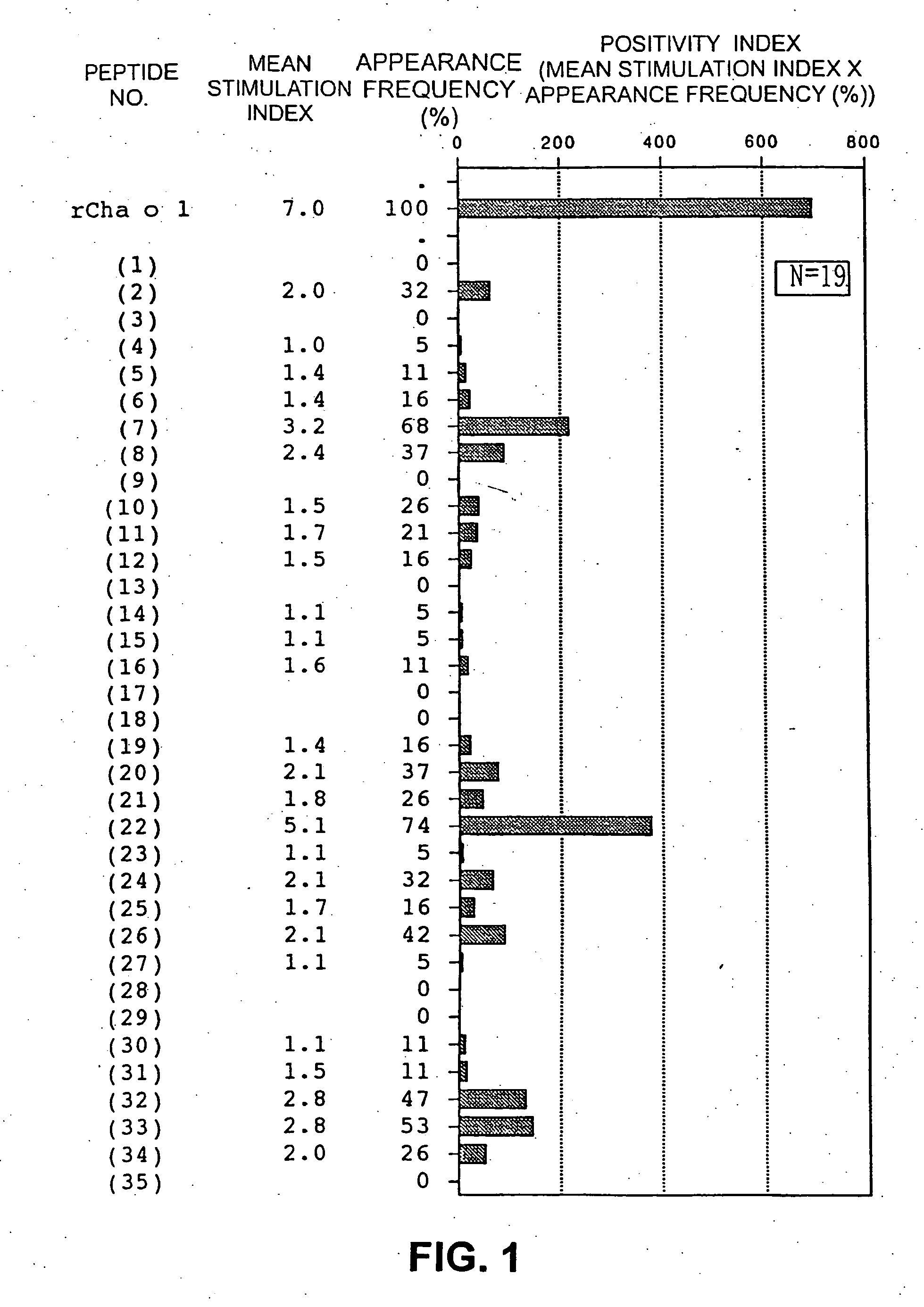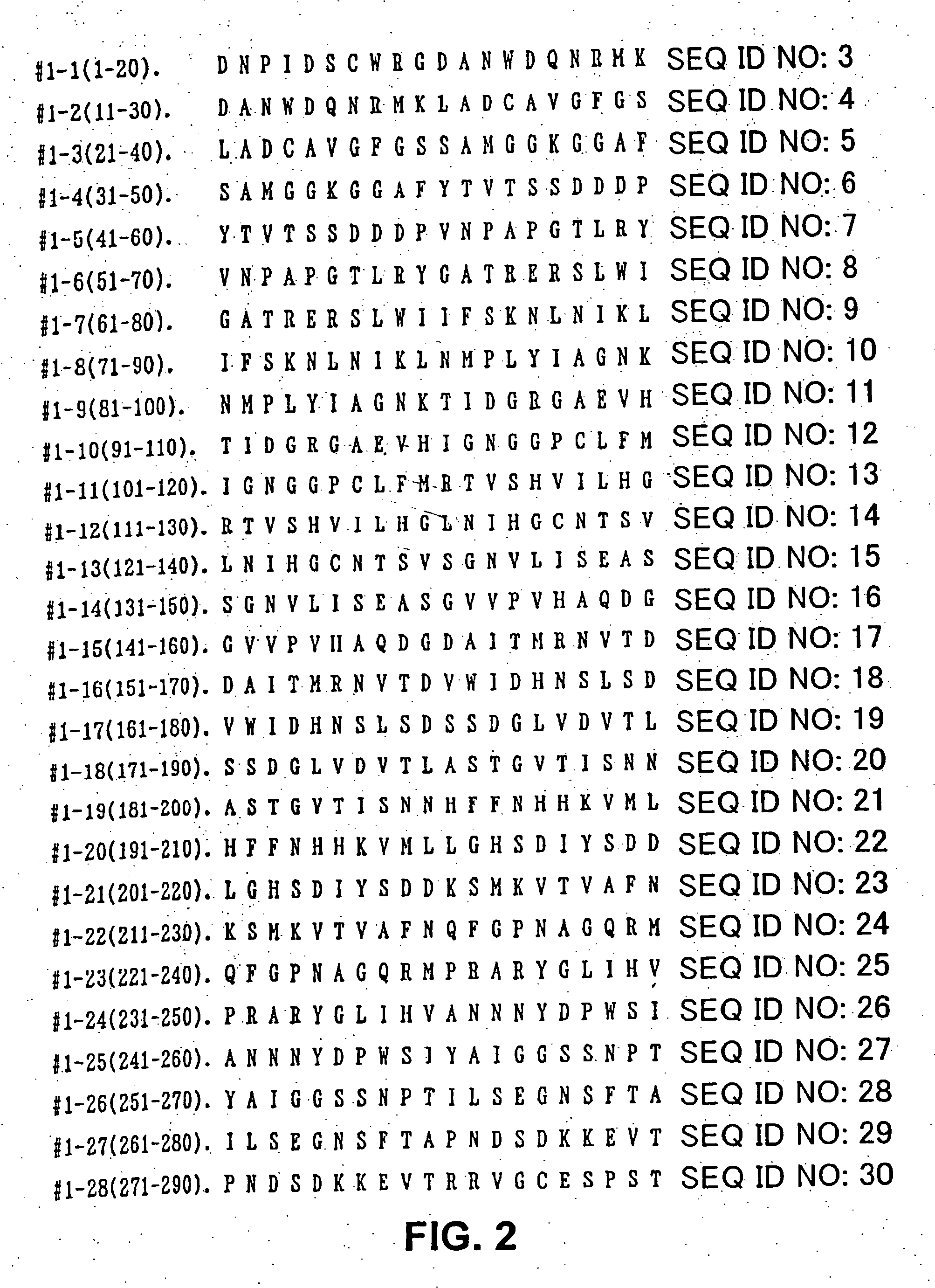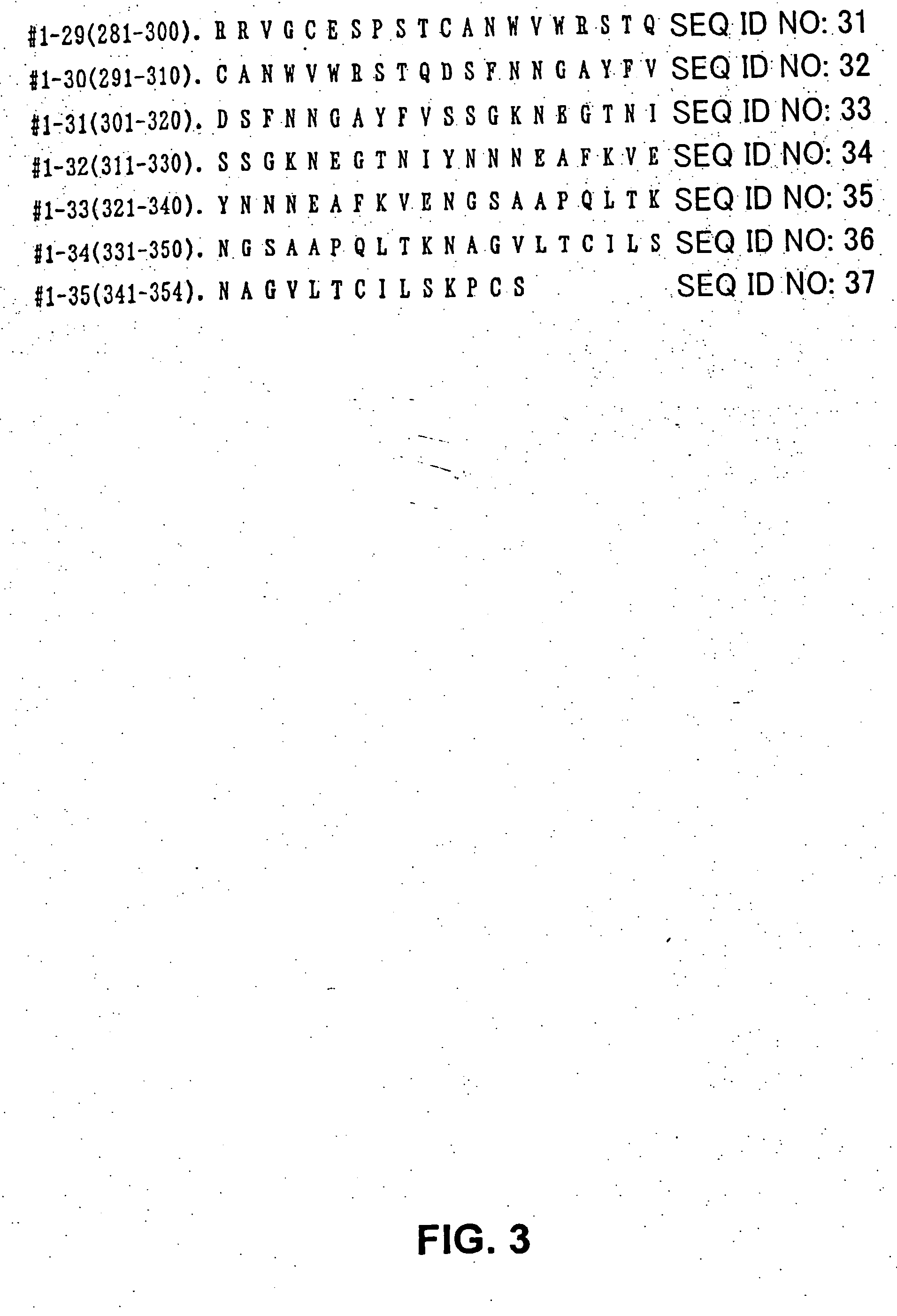T-cell epitope peptides
a peptide and t-cell technology, applied in the field of t-cell epitope peptides, can solve the problems of difficult to distinguish the symptoms caused by cedar pollen from those caused by japanese cypress pollen, and no reports have been made on japanese cypress pollen or on pollen caused by tree pollen
- Summary
- Abstract
- Description
- Claims
- Application Information
AI Technical Summary
Benefits of technology
Problems solved by technology
Method used
Image
Examples
example 1
Synthesis of Overlapping Peptides
[0037] Based on the amino acid sequences of Japanese cypress pollen allergens Cha o 1 (SEQ ID NO: 1) and Cha o 2 (SEQ ID NO: 2), overlapping peptides consisting of 20 amino acid residues (14 residues in Peptide #1-35 (SEQ ID NO: 37) and Peptide #2-51 (SEQ ID NO: 88), each containing 10 overlapping residues) were synthesized by the Fmoc method using a peptide synthesizer (PSSM-8, Shimadzu Seisakusho Ltd.). Thirty-five overlapping peptides were prepared for Cha o 1 (FIG. 1, SEQ ID NO: 3 through SEQ ID NO: 37), and 51, for Cha o 2 (FIG. 5, SEQ ID NO: 38 through SEQ ID NO: 88). The synthesized peptides were all purified by high-performance liquid chromatography (HPLC) using an ODS column. The purity was 90% or higher in all of the peptides. The molecular weights of the purified peptides were identified by using a LASERMAT 2000 (Finnigan MAT Ltd.).
example 2
Expression of the Recombinant Proteins in E. coli
[0038] Using a PCR technique, cDNA was amplified from plasmid DNA, in which Cha o 1 cDNA or Cha o 2 cDNA encoding a Japanese cypress pollen antigen had been cloned (Japanese Patent Application No. Hei 6-335089). A restriction enzyme recognition site was attached to the terminus of each cDNA. This DNA fragment was inserted into a histidine-tagged protein expression vector, pQE9, and the resulting vector was used to transform E. coli M15 (pREP4). Expression of the transforming gene was confirmed for ampicillin-resistant clones by SDS-polyacrylamide gel electrophoresis. The protein expressed was purified using a Ni-NTA agarose affinity column.
example 3
Establishment of T-Cell Line
[0039] A T-cell line on Cha o 1 was established as follows. Peripheral lymphocytes collected from 19 patients found positive to Japanese cypress pollinosis using Ala STAT (Nippon DPC Corporation) or CAP-RAST (Pharmacia) were separated by specific gravity centrifugation using Ficoll-Paque. The lymphocytes (2×106 cells) were suspended in RPMI 1640 medium (GIBCO, Inc.) supplemented with 2 ml of plasma from the same patient (10%) or human AB type serum (20%, Banpoh Tsusho Co., Ltd.). The suspension was incubated in a 24-well plate for 3 to 10 days (37° C., CO2 incubator, TABAI, Inc.), together with 10 to 30 μg / ml of the recombinant Cha o 1 obtained in Example 2 or with a mixture of the overlapping peptides (0.01 to 1 μM) obtained in Example 1. When T cells activated by Cha o 1 stimulation were verified microscopically, 5 U / ml of IL-2 (Boehringer Mannheim) was added to the system, followed by incubation overnight. On the next day, the medium was replaced with...
PUM
 Login to View More
Login to View More Abstract
Description
Claims
Application Information
 Login to View More
Login to View More - R&D
- Intellectual Property
- Life Sciences
- Materials
- Tech Scout
- Unparalleled Data Quality
- Higher Quality Content
- 60% Fewer Hallucinations
Browse by: Latest US Patents, China's latest patents, Technical Efficacy Thesaurus, Application Domain, Technology Topic, Popular Technical Reports.
© 2025 PatSnap. All rights reserved.Legal|Privacy policy|Modern Slavery Act Transparency Statement|Sitemap|About US| Contact US: help@patsnap.com



